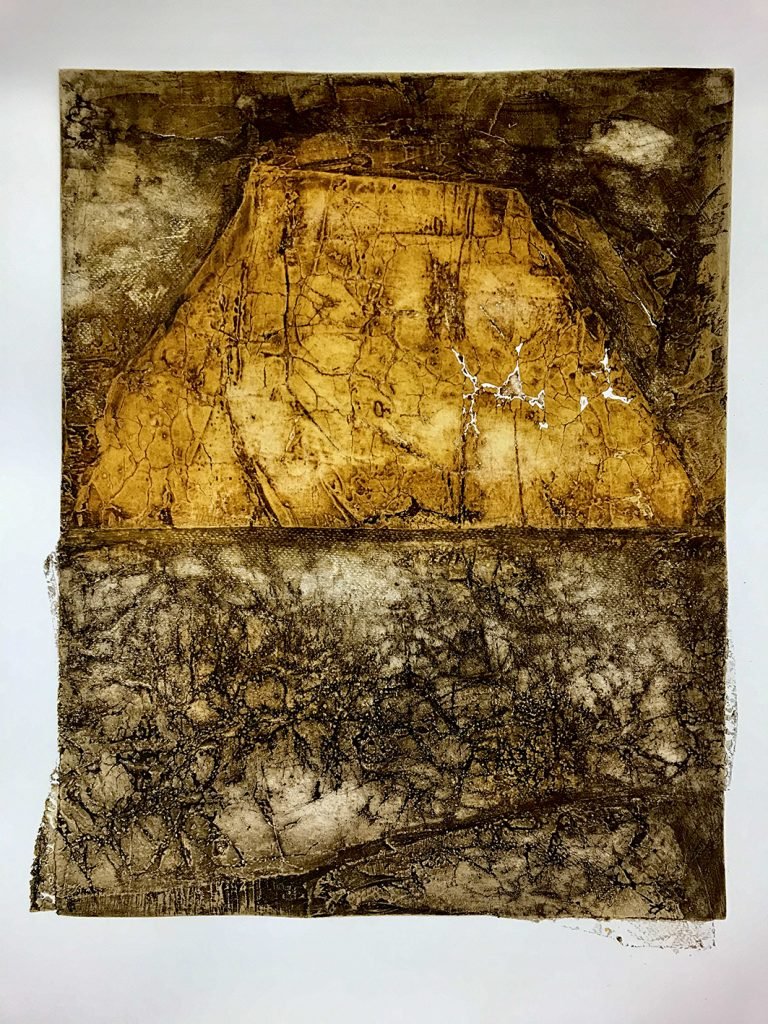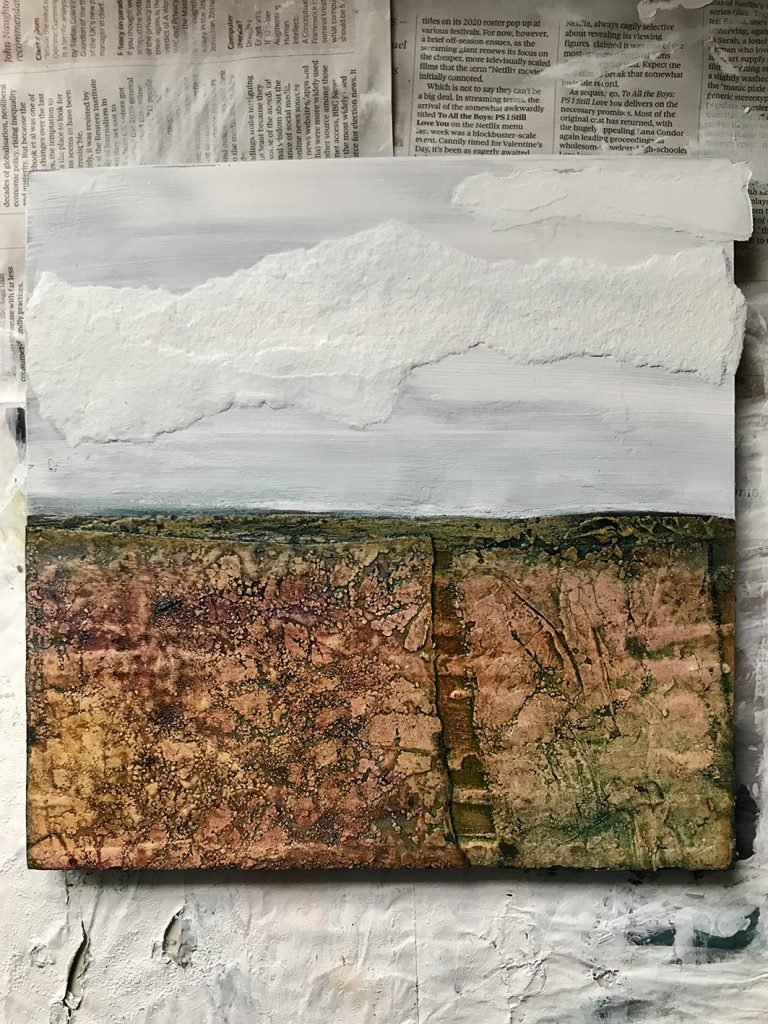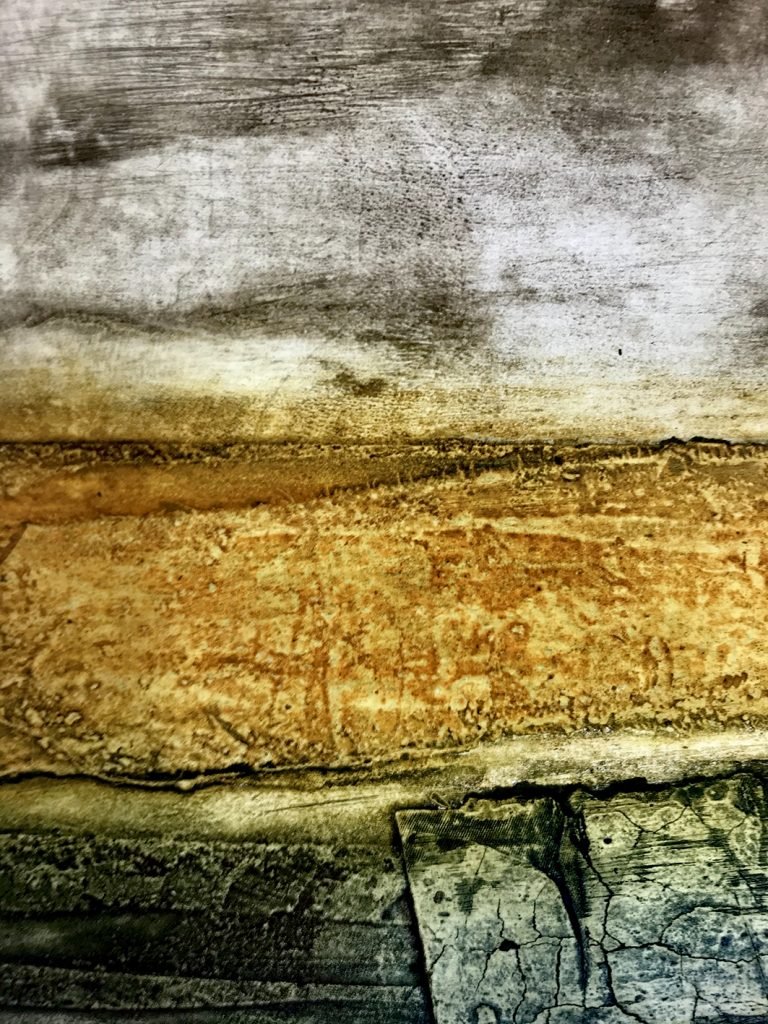Another technique for creating surface treatments on plates that I’ve been trying out recently is crackle texture. Until now, I’ve been using commercially made Crackle Paste sold by, among others, Golden, from the USA. The paste works very well, creating cracks as the paste dries and shrinks. The width and depth of the cracks is determined by the thickness of the layer applied. However, the paste is relatively expensive to use, particularly when it is required for extensive areas on large plates, and the nature of the cracks cannot be controlled – you get what it gives you.
The alternative I have found was an idea conceived by fellow printmaker Emily Harvey, aka The Curious Printmaker (Instagram: @thecuriousprintmaker). It involves coating an area of fabric e.g. plain cotton (t-shirt material works well too) with floor tile adhesive, the kind youthat can easily obtained at DIY stores such as B&Q. The material is stretched and tacked under tension to a sturdy board. The coating is allowed to dry fully before the material is manually stretched to make localised cracks. In this way, the extent of the cracking can be controlled. A stock of crackle texture sheets can be made and torn or cut off to add in to plates in specific areas. Ultimately, the texture can be created at far lower cost. Emily explains the entire process in her blog (see the link at the end of this article).
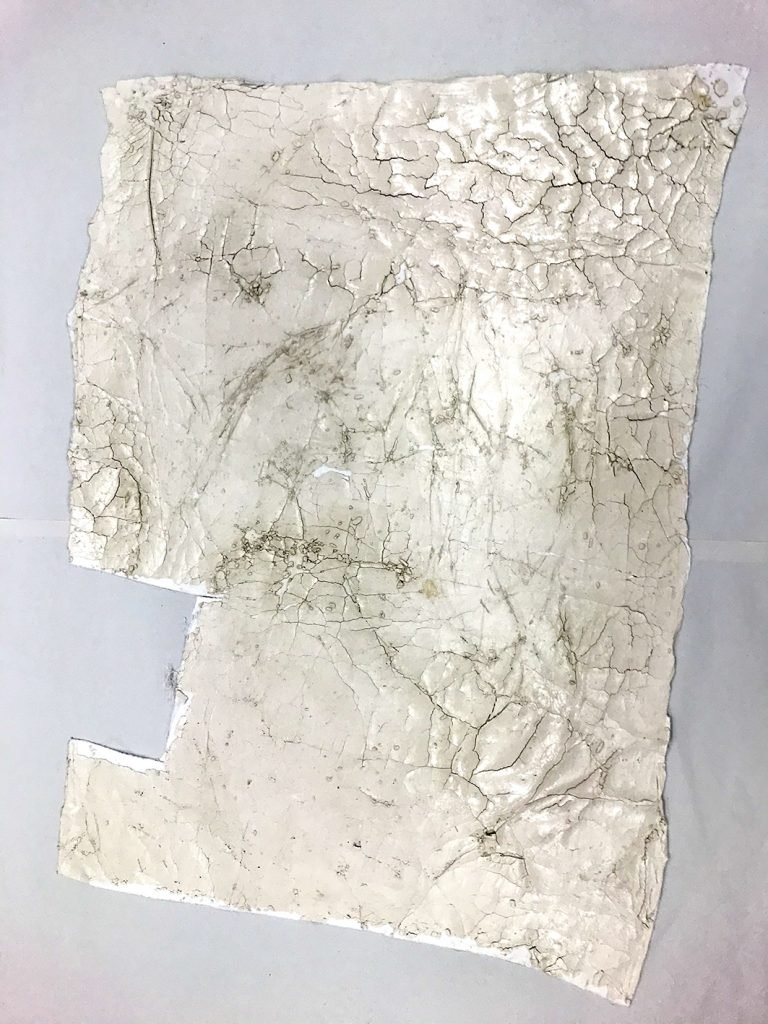
Above: a piece of crackle texture, on a sheet of cotton material
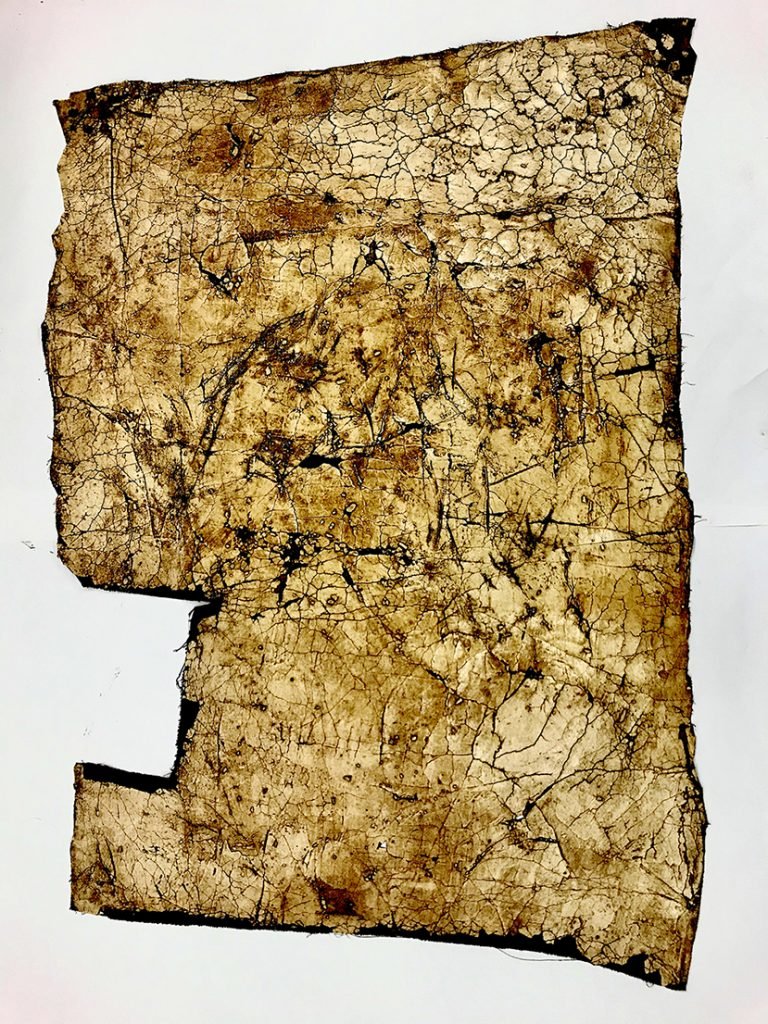
The same section, coated with shellac
The large crackle texture piece above was intended as a large (approx. 40 x 50cm) printing plate. However, I was disappointed with the quality of the print, so I have decided to keep it is a hanging piece or flat-ish sculpture. Through experimentation, I have found that the texture is perhaps best suited for use in smaller sections of plates, alongside other materials. It is important to make sure that all textures on the plate are the same height/depth (or close to it), to ensure that all areas of the plate produce an impression on the paper.
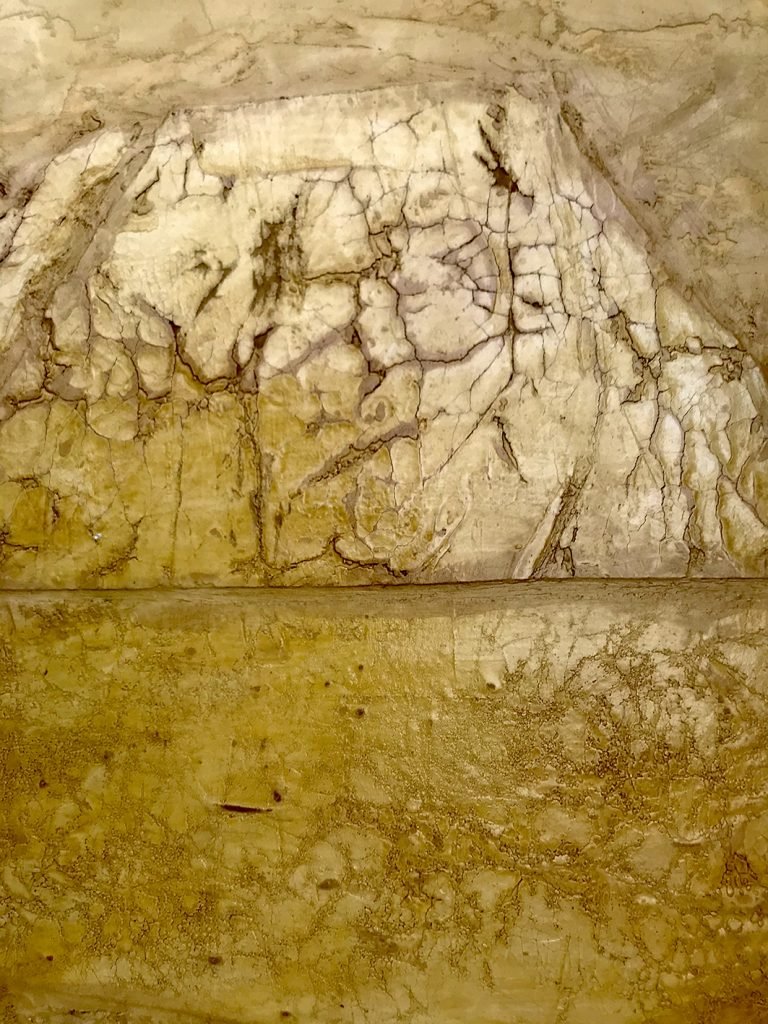
Above: crackle texture section embedded in a plate
Here’s the link to Emily’s blog page:
https://www.thecuriousprintmaker.co.uk/crackle-texture-collagraph-plates/
Find all my posts about my print stories on Twitter at: #artprintstories

